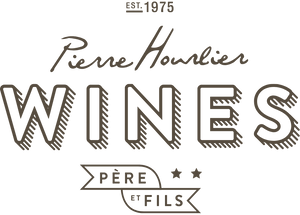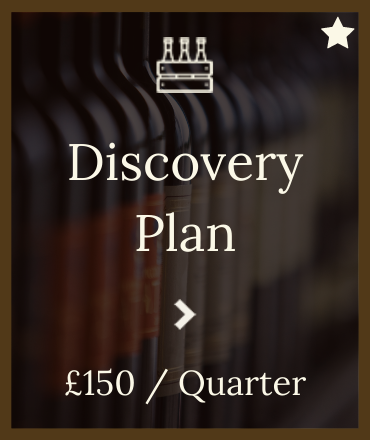Loire Wine - Buyers Guide

The Loire is France’s longest river — almost 400 km running from the Massif Central, situated in the centre of France, to the west towards the Atlantic. The Loire wine region mainly produces white wines; however, there are also fantastic reds and mouth-watering rosé made from Cabernet Franc, Pinot Noir, and Gamay grapes.
Vin de Pays Loire wines are simple, usually comprising a single grape variety, but wines at AOP level are world-class quality.
Typical Loire wine characteristics are fresh, light and fruity, and because of the length of the Loire, the western areas have more of an Atlantic influence compared with the more eastern areas which have more of a continental climate.
The central valley offers a broader variety: Sauvignon, Chenin, and Vouvray wines come in a variety of styles. There’s something to please every palate.
The ‘terroir’ is chalky limestone, which is very porous, allowing adequate drainage and vine roots to grow deep into the ground. There is a high calcium content in limestone, which also helps both Sauvignon and Chenin to maintain their acidity content, as they ripen.
There are several appellations for which the Loire wine region has become famous for, mainly Sancerre and Pouilly Fume. However, there are several neighbouring regions that will soon compete for a share of the Loire wine crown.
History and Production of Loire Wine
The Loire Valley follows the Loire River closely, and the vast territory has played an essential role throughout France’s history. The Romans brought viticulture to the Loire in the 1st century, and by the Middle Ages, Loire’s wine was one of the most prized in Europe.
Countless battles took place in the area, from the Roman rule to the Hundred Years’ War brought to an end by Loire’s own Joan of Arc. Yet, the region thrives today as much as its most glorious years. The Lore Valley was the heart of the French Renaissance and became the playground for the country’s aristocracy and royalty. The entire region is dotted with astounding castles, a testament of the region’s beauty, and its wine’s quality.
Grapevines have called the Loire Valley home for centuries, and today there are around 57,000 hectares of vines across the wide regions of Loire Atlantique, Anjou-Saumur, Touraine, and the Centre.
The region produces 7% of the country’s wine with 2 million hectolitres of fine wine. 40% of the wine is white, 20% is red, 20% is rosé, and the rest are delicious bubbles. White and red, dry, sweet and sparkling, the Loire Valley offers a wide range of vinous experiences.
Loire Valley Appellations
There are 69 AOC (Appellations d’Origine Contrôlée) wines in the Loire Valley spread between the Atlantic Ocean and the heart of France.

The upper Loire, not far from Paris, is home to the region’s finest Sauvignon Blanc and Pinot Noir, especially in the appellations Sancerre and Pouilly-Fumé.
In the central valley, Chenin Blanc is Queen, although the robust Cabernet Franc is well represented too. These both noble varieties dominate the appellations of Touraine, Chinon, Vouvray, and others.
As you come close to the Atlantic, a unique local variety takes over: Melon de Bourgogne, better known for its brightest expression — Muscadet wines.
Sancerre & Pouilly-Fumé
The vineyards here lie at the Loire’s left bank, and the wine has a herbal, mineral-rich profile. White wine made from Sauvignon Blanc has been on the map since the year 582.
Sancerre’s calcareous soils and the region’s continental climate produced the world’s sharpest Sauvignon, but the area is also home to tart and fruit-forward Pinot Noir.Pouilly-Fumé, a prestigious wine region developed by monks during the 12th-century, is paved with Kimmeridgian marl and oyster shells.

Here, Sauvignon Blanc grows into mineral, almost flinty wines with refreshing acidity reminiscent of ripe grapefruits. These are amongst the greatest white wines on the planet.
Anjou-Saumur
A few kilometres to the west, the neighbouring regions of Anjou and Saumur, nestle an impressive eighteen AOPs for a stunning wine style diversity.

This is home to some of France’s most prestigious sweet wines from Bonnezeaux, Coteaux du Layon, and Quarts de Chaume. They’re all crafted with the versatile Chenin Blanc.
This is also the birthplace of the biodynamic viticulture revolution, better expressed in Savennieres’ Chenin. For a sweet surprise, here’s where you will find the world-famous Anjou-Samour, a sweet pink wine made with the local Grolleau Noir, which is a real treat!
Vouvray and Touraine
Touraine, often called ‘The Garden of France’, is an expansive region where passionate winemakers produce white, red, rosé and sparkling wines. Sauvignon Blanc, Chenin, Gamay, Cabernet Franc and even some Malbec and Chardonnay become extraordinary wines of all styles.

Winemakers in Vouvray, on the other hand, are white and sparkling wine specialists. The region is prone to fungal threats, but also the noble rot botrytis cinerea, the source of the most luxurious, and decadently sweet wines.
Wines of all sweetness levels, from bone-dry expressions of Chenin to dessert specialities make Vouvray a multifaceted region that is a delight to explore.
Chinon
If you think the Loire Valley’s white wines are good, wait until you try the superb red wines made with Cabernet Franc in Chinon,
Bourgueil, and St Nicolas de Bourgueil. Red fruits, dried herbs and a tight acidic grip make these red wines versatile at the table.
As the Loire and the Vienne rivers converge, a unique microclimate allows red grapes to ripen beautifully. These are the most balanced interpretations of the noble Cabernet Franc, locally known as Breton, and they have an impressive age-worthiness.
Younger red wines and flowery rosés are famous in the region as well. Making Chinon one of the most cherished AOPs in the Loire.
Muscadet
The Atlantic shores bring chilly winds, humidity, and rain to the Nantes region, where only well-adapted grapes thrive. The most famous and abundant is the lesser-known Melon de Bourgogne, and the wines made from it are labelled as Muscadet.Muscadet is the perfect partner for oysters, scallops, sushi, sashimi, and other seafood specialities.

The wine’s natural acidity and minerality are unique. Wines made with Melon can be labelled Muscadet, Muscadet Coteaux de la Loire, Muscadet Cotes de Grandlieu, or Muscadet Sevre et Maine depending on the subregion, and they all have subtle differences. For a crisp, lively wine, there’s nothing like it.
Grape Varieties and Wine Styles
A significant difference between other major French regions and the Loire is it’s expansive catalogue of grape varieties and wine styles.
White grapes behind dry, crisp wines with a strong sense of place are Melon de Bourgogne and Sauvignon Blanc. Chenin Blanc is used to produce everything from dry whites to sweet dessert specialities.
Wineries also make sparkling wine with the wild grape variety. The Loire’s red wines are mainly crafted with Cabernet Franc, but Gamay, Pinot Noir and other less significant varieties complete the Loire’s wine repertoire. Of course, local, and unique varieties, including Grolleau, Pineau d’Aunis, and Romorantin add excitement to the region.
Buy Loire Valley Wine from Hourlier Wines
Hourlier Wines is your source for Loire Valley wines made with the region’s varied grape varieties in all wine styles. We work closely with some of the finest producers to bring you a picture-perfect postcard of what the area offers. Here is an exciting label to start you off on the journey across the verdant Loire Valley.
Christian Lauverjat Moulin Des Vrilleres Sancerre White

A gorgeous Sauvignon Blanc with citrus acidity, and a long mineral palate. A fantastic example for the category, and one of the purest expressions of the thin-skinned grape. Enjoy with goat’s cheese and seafood.
FAQ
What do wines from the Loire Valley taste like?
Passionate winemakers across the Loire Valley make all types of wines. Muscadet is a sea-scented wine with a fresh personality, and the Sauvignon Blanc produced inland is mineral-driven and fruit-forward.Red wines made with Cabernet Franc are berry-scented and tart, while the region’s Pinot Noir has cherry flavours and is smooth as silk.
Which food groups pair well with Loire wines?
Seafood, poultry, white, and red meat. Vegetarian dishes, stews, soups, and salads, there is no food and wine combination in which the Loire wines do not excel. Goat’s cheese and Sancerre are a classic combination. Oysters and Muscadet are not far behind.
What is the best way to store Loire Valley wine and how long will it keep?
White wines from the Loire valley have high acidity and excellent concentration, so they can be enjoyed between three and five years if stored at a cellar temperature away from light and heat sources. Red wines are longer lived, the best unfolding for decades. The same can be said about the region’s sweet wines; they will retain their freshness for many years.







